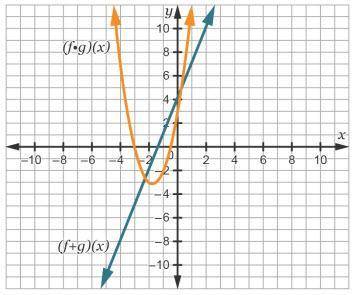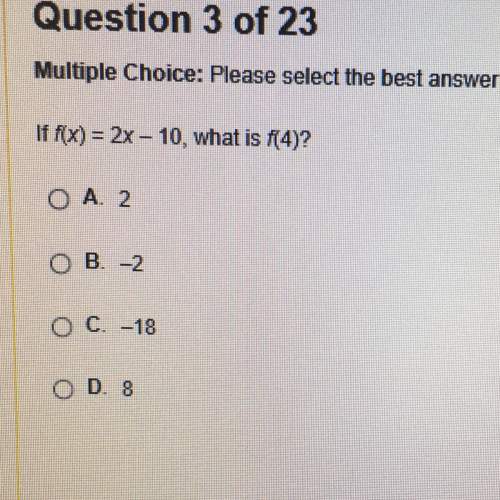
Mathematics, 26.04.2021 21:30 MilanPatel
The sum and product of two linear functions are shown. Which statements are true of the original functions, f(x) and g(x)? Check all that apply. When added, the sum of the y-intercepts must be 4. When multiplied, the product of the the y-intercepts must be 3. f(x) and g(x) have either both positive or both negative rates of change. f(x) could have a rate of change equal to 2, and g(x) could have a rate of change equal to 1. f(x) could have a rate of change equal to 0, and g(x) could have a rate of change equal to 3.


Answers: 1
Another question on Mathematics

Mathematics, 21.06.2019 19:30
Which of the following describes the symmetry of the graph of y = x3?
Answers: 2

Mathematics, 21.06.2019 21:00
Estimate the area under the curve f(x) = 16 - x^2 from x = 0 to x = 3 by using three inscribed (under the curve) rectangles. answer to the nearest integer.
Answers: 1

Mathematics, 21.06.2019 23:00
The ratio of the perimeters of two similar triangles is 4: 3. what are the areas of these triangles if the sum of their areas is 130cm2?
Answers: 3

Mathematics, 21.06.2019 23:00
The length of an intercepted arc of a central angle of a circle is 4 cm. if the radius of the circle is 5 cm what is the measurement of the central angle to the nearest whole degree
Answers: 2
You know the right answer?
The sum and product of two linear functions are shown. Which statements are true of the original fun...
Questions

Social Studies, 26.03.2021 08:00

English, 26.03.2021 08:00



Chemistry, 26.03.2021 08:00


Mathematics, 26.03.2021 08:00

Mathematics, 26.03.2021 08:00




Mathematics, 26.03.2021 08:00

Mathematics, 26.03.2021 08:00

Geography, 26.03.2021 08:00


Mathematics, 26.03.2021 08:00



Biology, 26.03.2021 08:00





